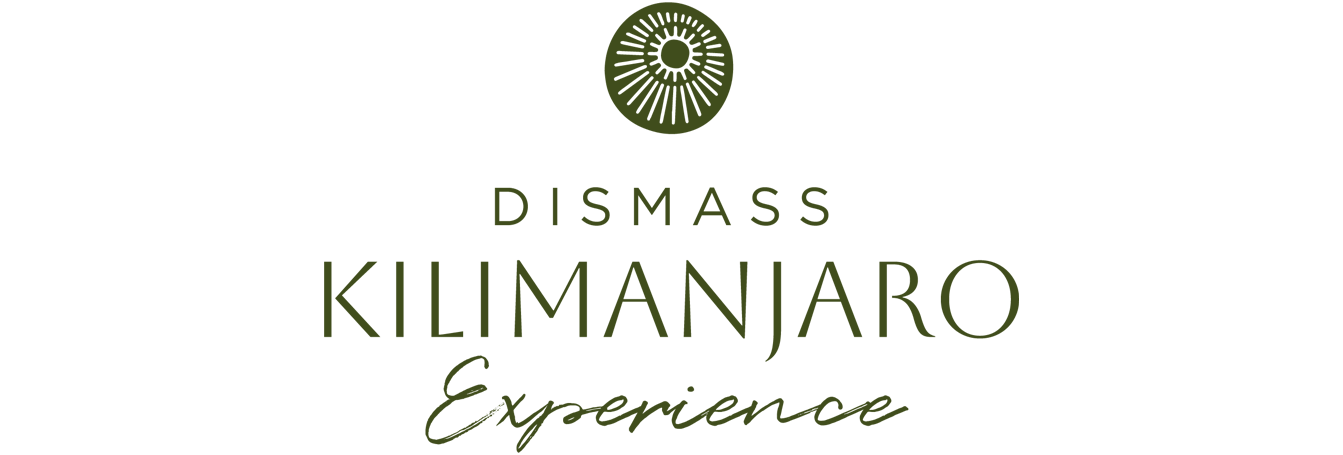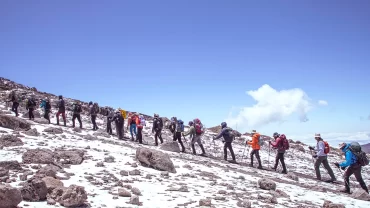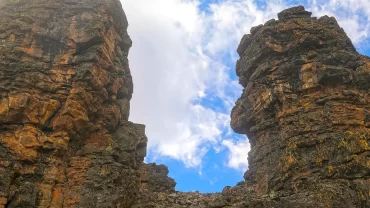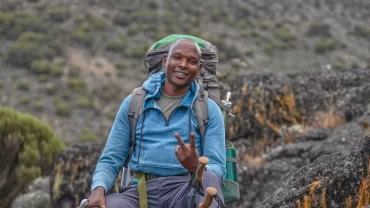The Quietest and Most Remote Path to Kilimanjaro’s Summit
1. Introduction to the Rongai Route
The Rongai Route is the only Kilimanjaro route that approaches from the north, near the Kenyan border. Known for being the least crowded route, Rongai offers a unique, remote, and scenic trek for climbers seeking a quieter and more peaceful ascent.
Unlike the Machame and Lemosho Routes, which pass through lush rainforests, Rongai features drier conditions, making it a good option during the rainy seasons. While its gradual ascent profile is favorable for acclimatization, the route lacks the “Climb High, Sleep Low” strategy available on other trails, making acclimatization slightly more challenging.
2. Key Facts About the Rongai Route
- Distance: ~74 km (46 miles)
- Duration: 6-7 days
- Difficulty Level: Moderate
- Scenery: Dry northern slopes, alpine desert, glaciated summit
- Acclimatization Profile: Average – no major “Climb High, Sleep Low” opportunities
- Success Rate: ~80% for 7-day trek, ~65% for 6-day trek
- Accommodation Type: Camping (no huts available)
- Best Time to Climb: January-March & June-October
3. Route Overview & Highlights
The Rongai Route starts at Rongai Gate on the northern side of Kilimanjaro, near the Kenya-Tanzania border. The route is characterized by a dry and remote landscape before merging with the Marangu Route at Kibo Hut for the final summit push.
Highlights of the Rongai Route:
✅ Least crowded route – perfect for trekkers who prefer solitude.
✅ Drier conditions – a good option for rainy seasons.
✅ Gradual ascent – making it easier for those concerned about steep climbs.
✅ Unique perspective of Kilimanjaro – approaching from the north offers a different view of the mountain.
4. Who Should Choose the Rongai Route?
✅ Best for:
- Trekkers looking for a quiet and uncrowded trail.
- Those climbing during the rainy season, as the northern slopes receive less rainfall.
- Climbers who prefer a gradual ascent without steep sections.
❌ Avoid if:
- You want the best acclimatization profile (Lemosho and Northern Circuit are better).
- You prefer varied scenery (other routes like Machame and Lemosho have more diverse landscapes).
- You want hut accommodations (Marangu Route is the only option for that).
5. Pros & Cons of the Rongai Route
✅ Pros:
- Less crowded – ideal for those who want a quiet trek.
- Drier trail conditions – better for hiking during the wet season.
- Gradual ascent profile – fewer steep sections compared to other routes.
- Good success rate (especially on the 7-day itinerary).
❌ Cons:
- Limited “Climb High, Sleep Low” opportunities – making acclimatization slightly harder.
- Less scenic than Lemosho or Machame – landscapes are more barren and dry.
- Merges with the busy Marangu Route for the final ascent, leading to more crowds near the summit.
6. Acclimatization & Success Rate
The Rongai Route has an average acclimatization profile, as it lacks the “Climb High, Sleep Low” opportunities available on longer routes. However, the gradual ascent helps mitigate some altitude sickness risks.
- 7-day itinerary success rate: ~80%
- 6-day itinerary success rate: ~65%
- Why? The extra day on the 7-day trek allows for better altitude adaptation.
7. Challenges & Difficulty Level
The Rongai Route is rated moderate in difficulty, making it a good option for those who want a steady climb without steep scrambles.
Key Challenges:
- Limited acclimatization strategy – requires good physical preparation.
- Colder summit night – as the final camp (Kibo Hut) is very exposed.
- Long final summit push – requires endurance and mental strength.
Preparation Tip: Focus on cardio and endurance training to ensure you’re prepared for the long summit night.
8. Best Time to Hike the Rongai Route
Like other Kilimanjaro routes, Rongai is best climbed during the dry seasons:
- January to March: Fewer climbers, cooler summit temperatures.
- June to October: Peak climbing season with stable weather but more crowded trails.
Best choice for wet seasons: Since Rongai is on the drier northern side, it’s a good option for April-May & November, when other routes experience heavy rainfall.
9. Packing & Preparation Tips
Packing for the Rongai Route is similar to other Kilimanjaro climbs but requires some specific considerations.
Essential Packing Items:
- Warm Clothing: Summit night from Kibo Hut to Uhuru Peak is extremely cold.
- Trekking Poles: Helpful for the long descent after the summit.
- Hydration System: Water bottles and CamelBak to prevent dehydration.
- Sleeping Bag: Rated for -10°C (14°F) or lower.
- Good Sunscreen & Sunglasses: Due to drier and more open landscapes.
For a detailed packing guide, check out The Ultimate Tanzania Adventure Packing List.
10. Comparing the Rongai Route with Other Kilimanjaro Routes
| Route | Difficulty | Duration | Success Rate | Accommodation | Crowds |
| Rongai | Moderate | 6-7 days | ~80% | Camping | Low |
| Lemosho | Moderate | 7-8 days | ~90% | Camping | Medium |
| Machame | Moderate-Challenging | 6-7 days | ~85% | Camping | High |
| Marangu | Moderate | 5-6 days | ~50-60% | Huts | High |
| Northern Circuit | Longest & Easiest | 9+ days | ~95% | Camping | Very Low |
If you want a quiet, drier route, Rongai is a great choice. However, for better acclimatization and varied scenery, Lemosho or Machame are better options.
11. Final Thoughts: Is Rongai the Right Route for You?
The Rongai Route is perfect for trekkers seeking a quiet, less crowded Kilimanjaro experience. Its gradual ascent and drier conditions make it a great alternative for those climbing during the wet season. However, due to limited acclimatization opportunities, it’s essential to be physically prepared for the altitude.
Are you ready to conquer Kilimanjaro via the Rongai Route? Start planning your adventure today!
For more insights, check out How to Choose the Best Kilimanjaro Route.





Comment (0)